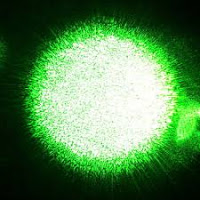If you ever tried to use a laser pointer, then you probably notice its quite strange appearance after pointing it. If we observe the laser on a surface, we could see that there is a grainy pattern on its beam? Lasers are great works of physics, and it holds several scientific explanations that may catch our interests.
There are various types of lasers, and its invention was in 1960 – and initially, the word laser is an acronym for “light amplification by stimulated emission of radiation.” Since then, we use lasers in different ways, mostly in devices, vehicles, machines, etc. It also comes in different sizes from small to significantly large lasers.
Lasers are commonplace in our today’s world, with its fantastic features become an influence on several things in our culture, including movies, tv shows, books, and many others. In this article, we will focus more on the simple laser device called the laser pointer – mainly, why does its beam have a grainy pattern?
What causes the grainy pattern in the laser pointer’s beam?
We already established the fact that laser pointers have a grainy pattern on its beam. At first, its appearance would leave us baffled as to why it display this strange pattern? Interestingly, there is a scientific explanation for this incredible phenomenon.
The main reason for its granular appearance is what we call the speckle pattern. When you point a laser in one direction, it produces a beam of light with varying wave nature called the interference.
As the beam of light touches a rough surface, it will produce wavelets and bounce off. This occurrence will then cause a diffuse reflection, which is commonly visible in rough surfaces, paper, and anything similar. The reflecting of light will cause the wavelets to overlap, which in turn causes the granular pattern when we look at it.
Although many other factors create the speckle pattern – one factor that significantly influences the appearance of this pattern is our eyes. Depending on our eyes, and how we look at it, we may see a different design or structure of the laser beam. Its appearance varies from near-sighted to far-sighted people as well as when we look at it with our head slightly tilted or not.
With all these said, we can say that the laser pointer is not just a simple device, but it holds a whole lot of science by simply pointing its laser.
Learn more about lasers
Now that we know the reason for the grainy pattern of lasers, let us take a more in-depth look into the different facts of lasers.
As mentioned earlier, lasers have been around for many years. The idea of lasers started in the late 1950s, and it was in 1960 when Theodore H. Maiman invented the first functional laser. Furthermore, we can derive the concept of lasers from one of the great scientist, Albert Einstein, wherein he established the theoretical foundations of lasers in his paper – On the Quantum Theory of Radiation in 1917. This theory leads to several studies that resulted in the invention of the idea of lasers.
Today, the use of lasers is widespread in various technologies, including computers, printers, barcode scanners, laser surgeries, military weapons, and several others. The utilization of laser technology became more popular over the years.
There are several types of lasers, which are under these categories – gas lasers, chemical lasers, dye lasers, metal vapor lasers, solid-state lasers, semiconductor lasers, and many others. Under these categories are various types of lasers. For example, in the gas lasers, it includes the helium-neon lasers, argon lasers, krypton lasers, xenon ion lasers, nitrogen lasers, carbon dioxide lasers, carbon monoxide lasers, and excimer lasers. For each type of lasers, there are different designs, models, and specs.
This information shows us that the laser technology that we today were far more advanced compared to the lasers fifty years ago. It paved its way over the years and proved its importance to our modern world. The use of lasers helped us in so many ways, and it is continuously developing. Meaning to say, we could expect a more sophisticated use of laser technology soon.

